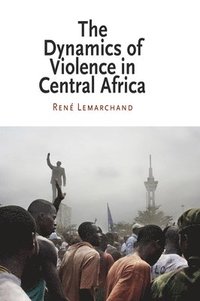
- Format
- Häftad (Paperback / softback)
- Språk
- Engelska
- Antal sidor
- 344
- Utgivningsdatum
- 2009-11-19
- Förlag
- University of Pennsylvania Press
- Illustrationer
- 10 illus.
- Dimensioner
- 226 x 152 x 20 mm
- Vikt
- Antal komponenter
- 1
- Komponenter
- Paperback
- ISBN
- 9780812220902
- 545 g
The Dynamics of Violence in Central Africa
- Skickas från oss inom 2-5 vardagar.
- Fri frakt över 249 kr för privatkunder i Sverige.
Passar bra ihop
De som köpt den här boken har ofta också köpt Who's Afraid of Gender? av Judith Butler (inbunden).
Köp båda 2 för 694 krKundrecensioner
Fler böcker av Ren Lemarchand
-
Forgotten Genocides
Ren Lemarchand
Unlike the Holocaust, Rwanda, Cambodia, or Armenia, scant attention has been paid to the human tragedies analyzed in this book. From German Southwest Africa (now Namibia), Burundi, and eastern Congo to Tasmania, Tibet, and Kurdistan, from the mass...
-
Remembering Genocides in Central Africa
Ren Lemarchand
Scene of one of the biggest genocides of the last century Rwanda has become a household word, yet bitter disagreements persist as to its causes and consequences. Through a blend of personal memories and historical analysis, and informed by a lifel...
Recensioner i media
"Ren Lemarchand ranks among the top Africanist political scientists of his generation, unmatched in his depth of knowledge about the African Great Lakes. He brings to The Dynamics of Violence in Central Africa a broad comparative perspective as well as decades of close observation of the political evolution of the Great Lakes region."M. Crawford Young, University of Wisconsin, Madison
Övrig information
Rene Lemarchand is Professor Emeritus of Political Science at the University of Florida.
Innehållsförteckning
Preface PART I. THE REGIONAL CONTEXT Chapter 1. The Geopolitics of the Great Lakes Region Chapter 2. The Road to Hell PART II. RWANDA AND BURUNDI: THE GENOCIDAL TWINS Comparative Perspectives Chapter 3. Ethnicity as Myth Chapter 4. Genocide in the Great Lakes: Which Genocide? Whose Genocide? Rwanda Chapter 5. The Rationality of Genocide Chapter 6. Hate Crimes Chapter 7. The Politics of Memory Chapter 8. Rwanda and the Holocaust Reconsidered Burundi Chapter 9. Burundi 1972: A Forgotten Genocide Chapter 10. Burundi at the Crossroads Chapter 11. Burundi's Endangered Transition PART III. THE DEMOCRATIC REPUBLIC OF THE CONGO: FROM FAILED STATE TO FRAGILE TRANSITION Chapter 12. A Blocked Transition: Zaire in 1993 Chapter 13. Ethnic Violence, Public Policies, and Social Capital in North Kivu Chapter 14. The DRC: From Failure to Potential Reconstruction Chapter 15. The Tunnel at the End of the Light Chapter 16. From Kabila to Kabila: What Else Is New? Notes Index


